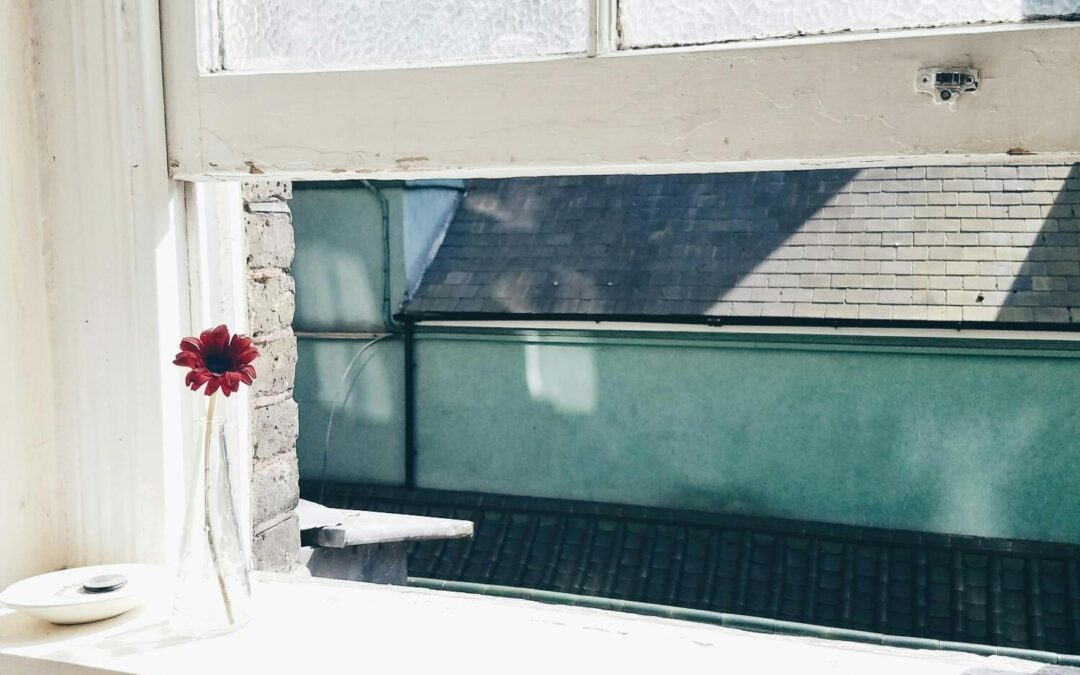If your window won’t stay up, it can be frustrating and create safety and comfort issues. Functional windows are important because they allow for ventilation and natural light while keeping your home secure. A window that doesn’t close properly also poses risks for homes with children or pets.
Windows affects your home’s energy efficiency. When damaged or not properly sealed, they let in drafts, which makes your heating and cooling systems work harder and increases your energy bills. Additionally, sagging windows detract from your home’s appearance and lead to an unkempt look.
This issue mainly affects single-hung and double-hung windows, which use springs, balances, or cords to support the sashes. Fortunately, most causes are easy to diagnose, and straightforward solutions exist to get your window working again.
Let’s look at the common reasons why your window won’t stay up and how to fix it.
Reasons Windows Won’t Stay Up
Several factors can cause this issue. Understanding these reasons can help you locate the problem and find an effective solution. Take a look at the following:
Broken Window Balances
Window balances are designed to support the weight of the sash (the movable part of the window) and help keep it in place. When these components wear out or break, the window won’t stay open, which is a frequent issue in older and new windows.
Damaged or Misaligned Sash
The sash is essential for proper window function. If it becomes misaligned or damaged, the window can slide down. Sometimes, the sash may have warped due to moisture or other damage.
Worn-Out Springs
Springs in certain window types help hold the window up. Over time, these springs can wear out or lose tension, leading to a sagging window. Replace them if they no longer work properly.
Dirt and Debris
Debris, dirt, and dust can pile up in the window track, causing the sash to slide down. Regular window maintenance is key to avoiding this issue. If you haven’t cleaned your windows in a while, this could add to the problem.
Environmental Factors
Colorado’s climate, particularly in the Pikes Peak area, is high elevation and varies with weather conditions. During summer storms, high humidity can cause wooden frames to swell, putting pressure on the window sashes.
In winter, the dry cold can lead to wood shrinkage, creating gaps and misalignment. The large temperature swings between hot summers and freezing winters also cause metal parts to expand and contract, leading to problems over time.
Poor Installation
Poor installation can cause windows to be misaligned. If the window frame isn’t level, it can create uneven pressure on the sashes, making it hard to open the window or causing it to slide down. Having a professional install your windows can help avoid these issues.
Check if the window appears to tilt or lean to one side. A level window should sit straight within its frame.
Inspect for signs of wear on the window parts, such as worn-out balances or sashes. Poor installation can cause these components to degrade faster.
Aging Materials
Over time, window materials can wear out. Wooden windows may rot or warp, especially in damp areas. Vinyl windows can become brittle from too much sun, while metal parts may rust. Regular checks can help find problems early and allow for repairs.
Improperly Sized Windows
If a window is too small for its frame, it may not fit snugly. A loose fit will cause the window to rattle or slide down easily when opened.
A window that is too large can create excessive pressure on the frame. The pressure can make it difficult for the window to stay in the desired position, causing it to sag or slide down.
Incorrect sizing can create gaps between the window and the frame. Having gaps can lead to misalignment, making it difficult for the window to function correctly and stay open.
A window that does not fit well may lack the necessary support from the frame. In this instance, it can prevent it from staying in place and cause additional wear on the window components over time.
How to Fix a Window That Won’t Stay Up
Identifying the exact issue is the first step toward fixing your window. Take a look at this window repair guide for sound, practical solutions to help get your window back in working order.
Inspect and Replace the Window Balances
First, check your window balances. Open the window and examine both sides of the sash to see if the balances are broken or damaged. If they are, you can purchase replacement parts from a hardware store.
Follow the instructions for your specific window type to ensure proper installation.
Repair or Replace the Sash
Check for visible warping or cracks if your window sash is damaged or misaligned. You might be able to repair minor issues with the wood filler or by adjusting the sash.
In more severe cases, replacing the sash might be your only option. You can order a new sash from the window manufacturer or a professional repair service company.
Replace Worn-Out Springs
Inspect windows that rely on springs to stay open for wear or damage. If the springs are no longer functional, you need to replace them. Be sure to find the right parts for your window model to ensure they fit and work correctly.
Clean the Window Tracks
Regular cleaning can prevent windows from sliding down due to dirt buildup. Use a vacuum or a brush to remove dirt and debris from the tracks. For a good clean, use a damp cloth and mild detergent.
Once the tracks are clean, see if the window stays up. Using this simple window maintenance tip may solve the problem in many cases.
When to Call a Professional
While many window repairs are manageable on your own, there are situations where it’s best to call in a professional. If your window won’t stay up despite your efforts, or if you’re dealing with more complex issues like broken frames or extensive damage, it’s wise to call an expert.
A professional can correctly diagnose the problem and provide safe and effective solutions to ensure a lasting repair and prevent further issues.
Window Maintenance Tips to Prevent Future Issues
Preventive window maintenance can save time and money in the long run. Here are a few tips to help you keep your windows in good working condition:
- Clean the tracks regularly
- Lubricate moving parts
- Check window balances and springs annually
- Inspect weatherstripping
Use the Right Replacement Parts
When fixing your window, make sure you’re using the correct parts. To get the right components, you’ll need to know your window’s brand, size, and type. If you’re unsure, bring the old part to a hardware store or consult a professional to avoid costly mistakes.
Different windows use various balance systems to function properly. For instance:
Windows With Spiral Balances
Some windows use spiral balances, which rely on a coiled rod to support the sash. If these balances break, the window won’t stay up. Replacing spiral balances can be a bit tricky, so be sure to follow the manufacturer’s instructions carefully.
Windows With Coil Balances
Coil balances are another type commonly found in modern windows. These balances are mostly easier to replace but still need the correct parts. If your window uses this system, replacing the broken coil balance should resolve the issue.
Windows With Block and Tackle Balances
Block and tackle systems use pulleys and weights to support the window sash. If these components wear out or break, the window will slide down. Replacing these parts can be more complex, so consider getting professional help if you’re not experienced with this type of repair.
Windows With Counterbalance Systems
Counterbalance systems use a spring-loaded mechanism to hold the window in place. The window may slide down unexpectedly if the springs lose tension or break. To address this issue, replace broken parts with the correct specifications for your specific window model.
Temporary Solutions While Waiting for Repairs
If you’re waiting on replacement parts or a professional repair, there are a few temporary fixes to keep your window open until you can make a proper repair. You can use a prop like a wooden dowel or stick placed in the window track to hold the window open temporarily.
If you’re in a pinch, you can use a rubber doorstop or another small item to keep the window from sliding down. Be careful not to damage the track.
Final Thoughts on Why Your Window Won’t Stay Up
If your window won’t stay up, don’t worry-it’s a common issue that can be resolved. The first step for finding a solution is identifying the cause, such as broken components or misalignment. Once you understand the problem, you can take the right steps to fix your sliding window.
If you live in Colorado Springs, CO, and can’t resolve this issue, it’s best to call Complete Window Care. We are a local, family-owned glass replacement business that offers our clients a selection of repair services. We pride ourselves on honesty and professionalism, so contact us today for reliable sagging window solutions.

